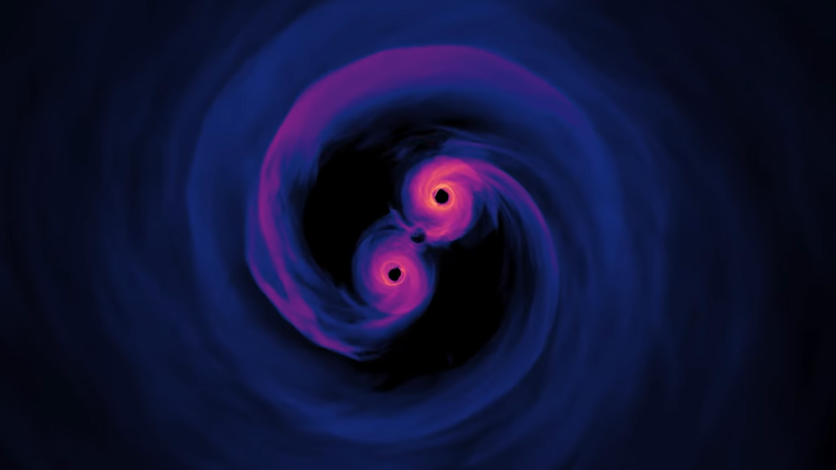One of the most eagerly anticipated events in contemporary astronomy may be present in the strange behavior of a galaxy about a billion light-years away.
The SDSS J1430+2303 galaxy's light fluctuations strangely resemble two supermassive black holes with a total mass of about 200 million Suns that are on the verge of colliding with one another, according to a report by ScienceAlert.

Imminent Collision
Astronomers believe that during the next three years if the galaxy's strange behavior is actually the result of massive black holes, a collision between the two will be "imminent."
Although J1429+2303 may be our best chance to date to witness the collision of two supermassive black holes, astronomers are still unsure of its precise nature. Hence, scientists will have to keep monitoring the galaxy.
In 2015, the first evidence of two black holes colliding was discovered. Due to the gravitational waves that these enormous events cause to ripple through space-time, more detections have been made since that time.
ScienceAlert said that most of these mergers are yet to include binary pairs of black holes, each of which has a mass around that of a single star. The gravitational wave detectors LIGO and Virgo, which made the detections, are then made for masses in this range.
ScienceAlert further noted that the frequency range of our observatories today is too low to detect the more ripples produced by inspiralling and colliding supermassive black holes, which are millions to billions of times more massive than the Sun.
However, scientists still anticipate a massive outpouring of light across the spectrum, even in the absence of a detector that can identify low-frequency gravitational waves.
Detecting a Supermassive Black Hole Binary
Scientists from the University of Science and Technology of China under the direction of Ning Jiang also described some strange behavior in J1430+2303. The galactic nucleus oscillations shrunk from a time interval of nearly a year to just one month during three years.
However, it is still not certain if the activity occurring at the center of J1430+2303 is connected to a black hole binary. Since galactic nuclei are strange regions that emit signals that are challenging to decipher, something else may be driving the variability in the heart of J1430+2303.
A team led by Liming Dou of Guangzhou University in China has made an effort to find high-energy signs that could detect a supermassive black hole binary on a decaying orbit using data from a variety of X-ray observatories covering 200 days.
The scientists did observe fluctuations in the galaxy's X-ray brightness as well as a specific form of emission linked to iron falling onto a black hole, which they were able to detect with a 99.96% confidence level from two independent equipment.
Additionally, an analysis of radio data published in July came up empty. Therefore, it seems that scientists are still unsure of what exactly is going on with J1430+2303. Hence, scientists will have to look further to solve its mysteries.
Related Article : Astronomers Find Hoard of Hidden Black Holes Coming from Dwarf Galaxies!
This article is owned by Tech Times
Written by Joaquin Victor Tacla
ⓒ 2025 TECHTIMES.com All rights reserved. Do not reproduce without permission.




